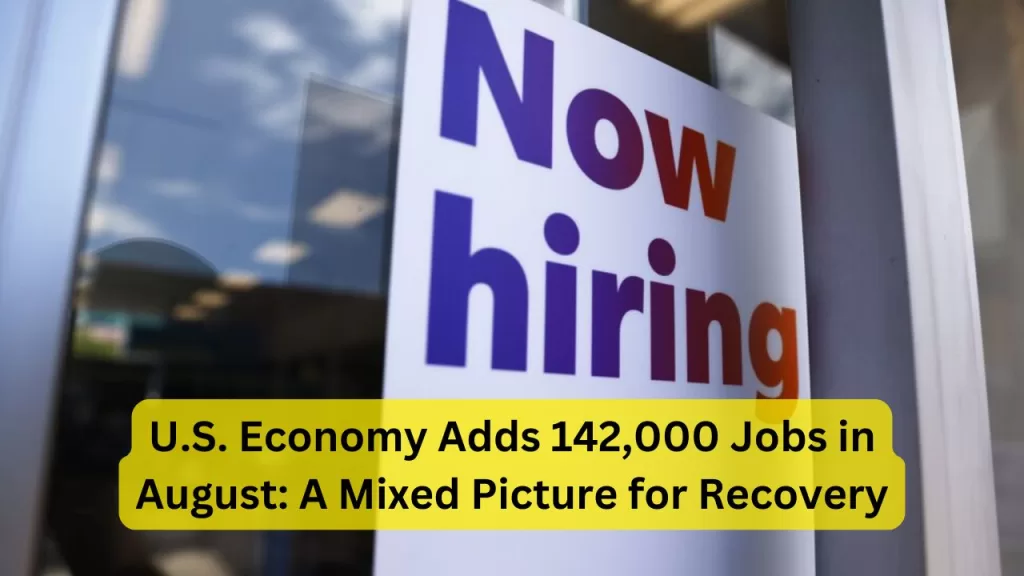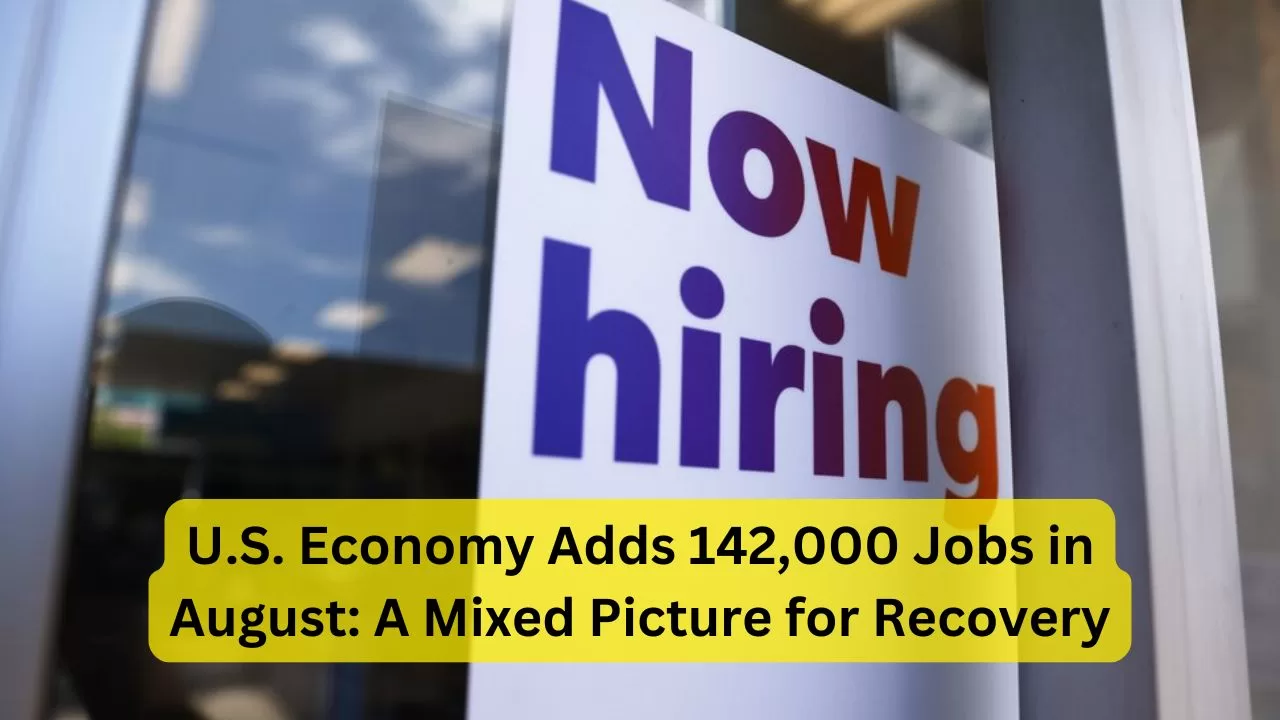
The U.S. economy added 142,000 jobs in August, signaling a steady but slower pace of job growth. This number came in below economists’ expectations of around 170,000 jobs, marking a slowdown from previous months. The unemployment rate ticked up to 3.8%, slightly higher than July’s 3.5%. Despite this, certain sectors, like healthcare and hospitality, continue to lead in job gains, while others, such as manufacturing and transportation, experienced declines.
Understanding the Numbers
The addition of 142,000 jobs in August reflects the ongoing recovery of the U.S. labor market, but at a more moderated pace compared to the rapid hiring seen earlier in the year. One of the most significant factors contributing to the slower pace of hiring is the Federal Reserve’s strategy to combat inflation by raising interest rates. Higher borrowing costs have affected various industries, including construction and manufacturing, which have seen fewer job openings as companies navigate tighter financial conditions.
However, sectors like healthcare, professional services, and hospitality remained robust in their hiring efforts. Healthcare, in particular, added a significant number of jobs as hospitals, clinics, and other care facilities continue to meet rising demand for services in the post-pandemic era. Additionally, the leisure and hospitality sector, which includes restaurants, bars, and hotels, has bounced back strongly, though employment in this sector is still below pre-pandemic levels.
Unemployment Rate Rises to 3.8%
One of the key headlines from the August jobs report was the increase in the unemployment rate to 3.8%. This marks a slight rise from the 3.5% rate in July and suggests that more people are entering the labor force, looking for jobs. The labor force participation rate, which measures the percentage of working-age Americans either working or actively looking for work, also increased to 62.8%, its highest level since before the pandemic.
While the rise in unemployment could be viewed as a negative indicator, it may also signal that more workers, previously sidelined by the pandemic or discouraged from seeking work, are re-entering the job market. A growing labor force is generally considered a positive sign for the long-term health of the economy, even if it causes the unemployment rate to rise temporarily.
The Impact of Inflation and Federal Reserve Policies
The job market’s performance in August is closely tied to the Federal Reserve’s actions to control inflation. Since March 2022, the Fed has aggressively raised interest rates to bring inflation down from the highs seen in 2021 and early 2022. Higher rates typically slow down the economy by increasing borrowing costs, making it more expensive for businesses to invest in new projects or hire additional staff. This is likely one reason for the cooling in job growth.
Inflation has eased from its peak, but it remains above the Fed’s 2% target. As a result, the central bank has signaled that it may continue to keep interest rates elevated or raise them further if necessary. This delicate balancing act between curbing inflation and supporting job growth is a key challenge for policymakers. The slower job gains in August may indicate that higher interest rates are beginning to take effect, but it’s unclear if this will lead to broader economic slowdown or if the job market can maintain steady growth despite these headwinds.
Sector Breakdown: Healthcare, Hospitality Lead Job Gains
A closer look at the August jobs report reveals the sector-specific trends shaping the U.S. labor market. Healthcare led the way in job creation, with hospitals, outpatient care centers, and nursing homes adding thousands of new positions. This reflects an aging population and a greater demand for medical services, which has accelerated since the pandemic.
The leisure and hospitality sector also saw solid job gains, though it still hasn’t fully recovered from the massive losses during the COVID-19 pandemic. Restaurants, hotels, and bars are gradually hiring back staff as consumer demand for travel and dining out remains strong. However, the industry is facing challenges such as higher wages and labor shortages, which may cap the pace of growth.
On the other hand, sectors like manufacturing and transportation saw weaker job growth or slight declines. Higher interest rates, supply chain issues, and a softer demand for goods have contributed to slower hiring in these industries. Construction, which had been strong earlier in the year, has also seen hiring cool as the housing market adjusts to higher mortgage rates.
Wage Growth and Worker Pay
Despite the more subdued pace of job growth, wages have continued to rise. Average hourly earnings increased by 0.2% in August, and on an annual basis, wages were up 4.3% from a year earlier. While wage growth has slowed from earlier in the year, it is still above the pre-pandemic average. This suggests that employers are still competing for workers, particularly in industries facing labor shortages, such as healthcare, transportation, and hospitality.
Higher wages are generally positive for workers, but they can also contribute to inflation if businesses pass on the increased labor costs to consumers through higher prices. The Fed is keeping a close eye on wage growth as it assesses whether inflationary pressures are likely to persist.
Economic Outlook and Future Expectations
The August jobs report provides a snapshot of a resilient, yet cooling labor market. While the U.S. economy continues to create jobs, the slower pace of hiring and the rise in unemployment signal that the effects of higher interest rates are starting to be felt. The job market remains tight, but it is not immune to the broader economic challenges posed by inflation, rising rates, and geopolitical uncertainties.
Looking ahead, economists and policymakers will be closely watching the next few months to see if this trend of slower job growth continues or if the labor market can regain momentum. The Federal Reserve’s decisions in the coming months will also play a crucial role in shaping the economic landscape. If inflation remains high, further rate hikes could slow down job growth even more, while a softer inflation reading might allow the Fed to ease its stance.
Overall, the addition of 142,000 jobs in August reflects a U.S. economy that is still growing but facing significant headwinds. For workers, especially those in industries like healthcare and hospitality, job opportunities remain strong. However, the broader economic environment is more uncertain, and it remains to be seen how the job market will evolve in the face of these challenges.
